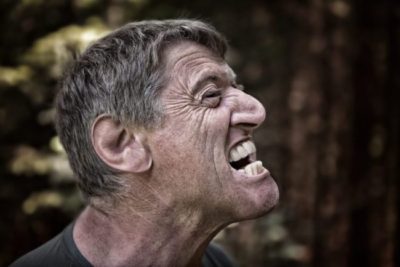What is pain? Why do we have pain? And why can it stick around?
We get asked these question’s all the time, so we thought we would give you some insights into the pain experience.
Pain is a sensation from the brain which is protective against real or perceived danger. Pain is a complex experience which is the combination of information from many different sources (muscle, bone, neurological tissues etc). The brain perceives the information from these sources and determines whether it needs to have an output of pain as protection.
When a person has an acute injury there is actual damage to tissues and therefore the brain sends off these alarm signals (pain) to protect the body and help with healing. As practitioners our primary goal is to determine what’s injured and then help restore normal pain threshold experiences as soon as possible.
At Trident we do this through education and movement based techniques to help dampen down this protection pain threshold system allowing patients to return to their normal activities pain free.
But what happens if my pain hangs around? Patients who complain of pain for longer durations (> 3 months) are suffering from chronic pain.
In chronic pain there is a disconnect between the level of tissue damage and the pain experience. Pain is not only influenced by tissue damage but also things like previous injury history, your fears, thoughts and anxieties around your pain experience.
Your brain will determine whether an output of pain is warranted depending on the stimulus – the problem in chronic pain is that this can happen without tissue damage. If we think about when we crank up the volume on our radio we will hear the music louder however the person on the other end of the radio is not singing any louder. This analogy is similar to someone experiencing chronic pain where the messages from the tissues are being amplified as pain without any more damage to the tissues.
Often patients complaining of chronic pain will comment that their pain will come on through periods of stress or at particular times of the day and this is due to a process called central sensitization where the modifiable factors such as fears, stress and anxieties have been present at the same time as pain.
If around for long enough the brain has associated these experiences as being the same and therefore they become more efficient at experiencing pain through a process called neuroplasticity (read “The Brains Way of Healing by Norman Doidge or our previous article here).
“Things that wire together, fire together!”
So as a healthcare practitioner it is our role to educate patients about the complexity of the pain experience and tailor movement based strategies to help empower patients to return to the activities they love, taking control of their pain experiences.
If you or your friends / family want to know more about pain both Steve and David specialise in the diagnosis, education and management of both acute and chronic musculoskeletal conditions. Call the clinic today on (02) 8541 7498.
Wednesday 6th June lock it in the diary for our Chronic Pain workshop. We will cover the need to know on pain, why it becomes chronic and much more. 7pm
